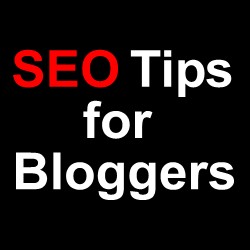SEO Tips for Bloggers
 SEO Tips for Blogs
SEO Tips for Blogs
SEO and Blogging
When it comes to SEO (search engine optimization) and blogging there are some basic concepts that should be included with every blog post. If you can bring traffic to your blog by reaching a high level in the organic search results for a keyword phrase important to you and your blog theme then this is very valuable traffic. It is valuable because the searcher is seeking for just what you have to offer. If you can then repeat this for multiple keyword phrases then you will be building traffic that can work very nicely for you and your blog.
It is not enough to produce high quality blog content if no one searches for it and no one can find it.
Here are some blogging SEO tips to help you with your organic search positioning.
1. SEO Tools
Make sure that you use a blogging platform that provides you with SEO tools. If your blog does not have SEO tools available to you then you will be significantly handicapped in your SEO efforts.
2. Headings
Use descriptive headings and subheadings for every post. Every post should have a single H1 tag and use the H2 tag for your subheading. If your blog post has multiple sections that should also have headings then make these sections stand out with either additional H2 tags or perhaps as H3 tag. The search engines look for these heading tags and give the words used to make them more value when they try to determine what your blog post is about.
3. Keyword Density
Use the keyword phrases of your blog theme or the specific blog post in the text of the post. Be careful not to overuse your important keyword phrases as something that is redundant or repetitious is not good for your readers and therefore not good for you blog.
4. Photos & Text
You have 3 opportunities to associate text with your photos or graphics. First, when you name the photo. You can let your camera name the photo and then you will get something such as DCP23456 which will not reveal anything about the photo or you can use a simple and short descriptive phrase with the words separated by a hyphen. This provides some information to the search engines about the photo or graphic. Second, you can use the alt text tag to provide a short keyword-rich description of the photo of graphic. Third, you can provide a caption which describes the photo or graphic.
5. Description Tag
Use the HTML Description tag for every blog post. The search engines not only use this tag to better understand the post content but they also present this description when they show your blog post in their search results. The important tag therefore has a dual role. It helps your blog post to be found in search and can help people to decide that they should click through when your post is presented.
 6. SEO Coaching
6. SEO Coaching
It may be worth while for you to receive some specific SEO coaching. To learn the basic can go a long way. The basics should be included in each of your blog posts. Look for classes in your area. Look for online training. Perhaps you may even want to hire a SEO expert to help you to get started.
7. Be Patient and Persistent!
Good search position does not happen overnight. You also need to realize that if your competition is good then you need to be good as well but to outperform you need to be better. Therefore know your keyword phrases and know the competition for these phrases. Be willing to put in the time and effort to compete for a series of important keyword phrase by knowing your competition and knowing what it will take to outperform then and then to be consistent going after the prize.
The nice thing about a blog is that you can control all of this. A blog can be a very important part of your “center of content”. To develop your center of content is a vital part of content marketing. To learn more about using your center of content and social media you may enjoy this post.
